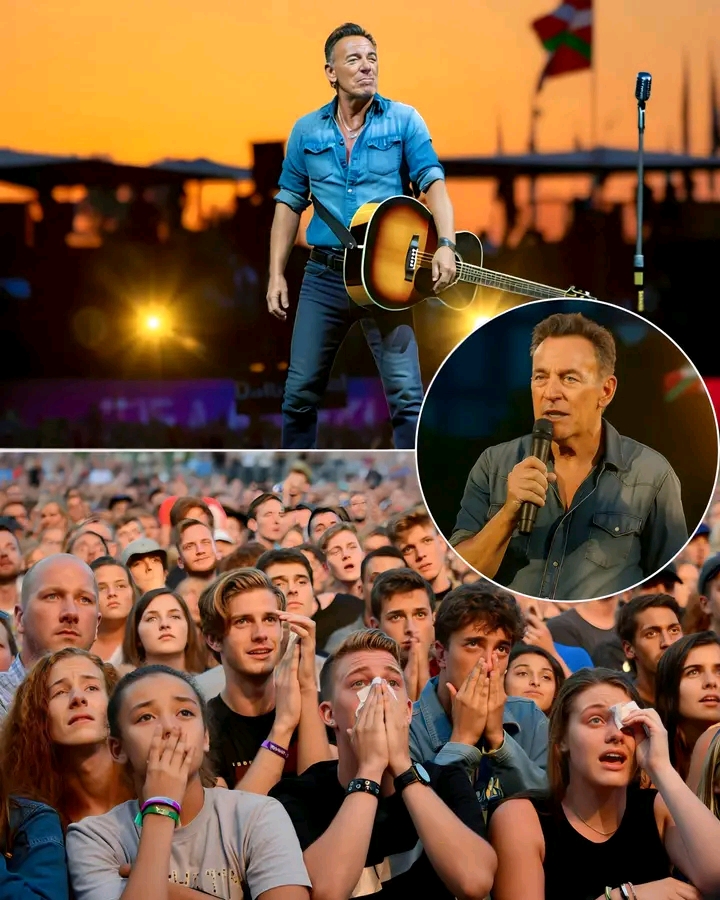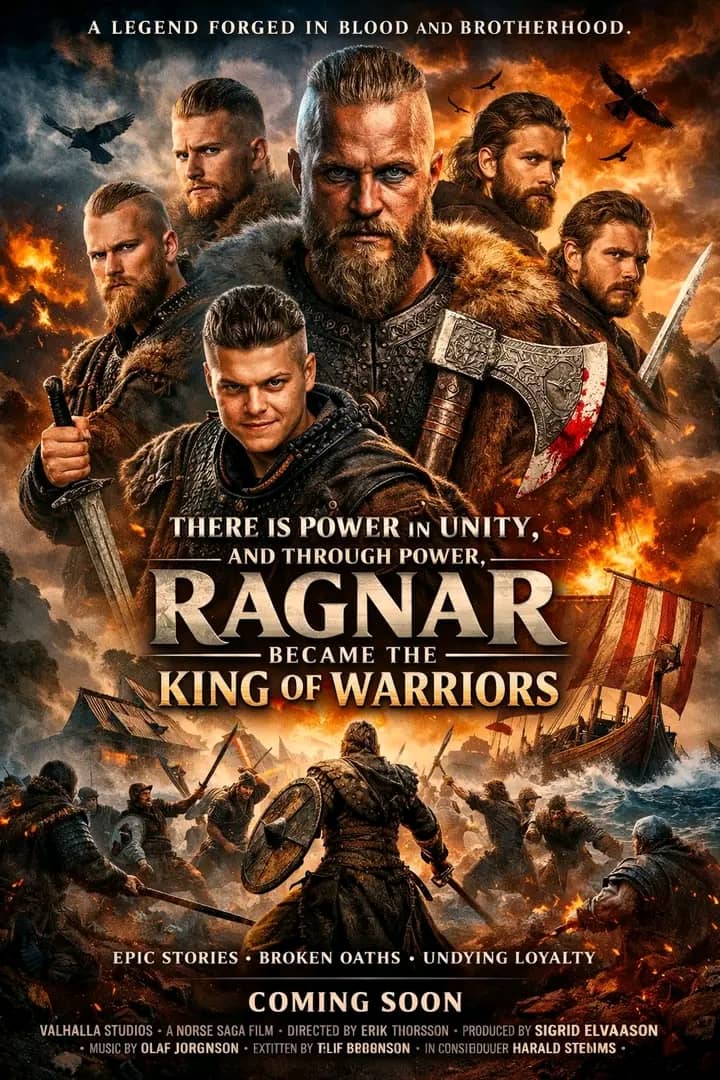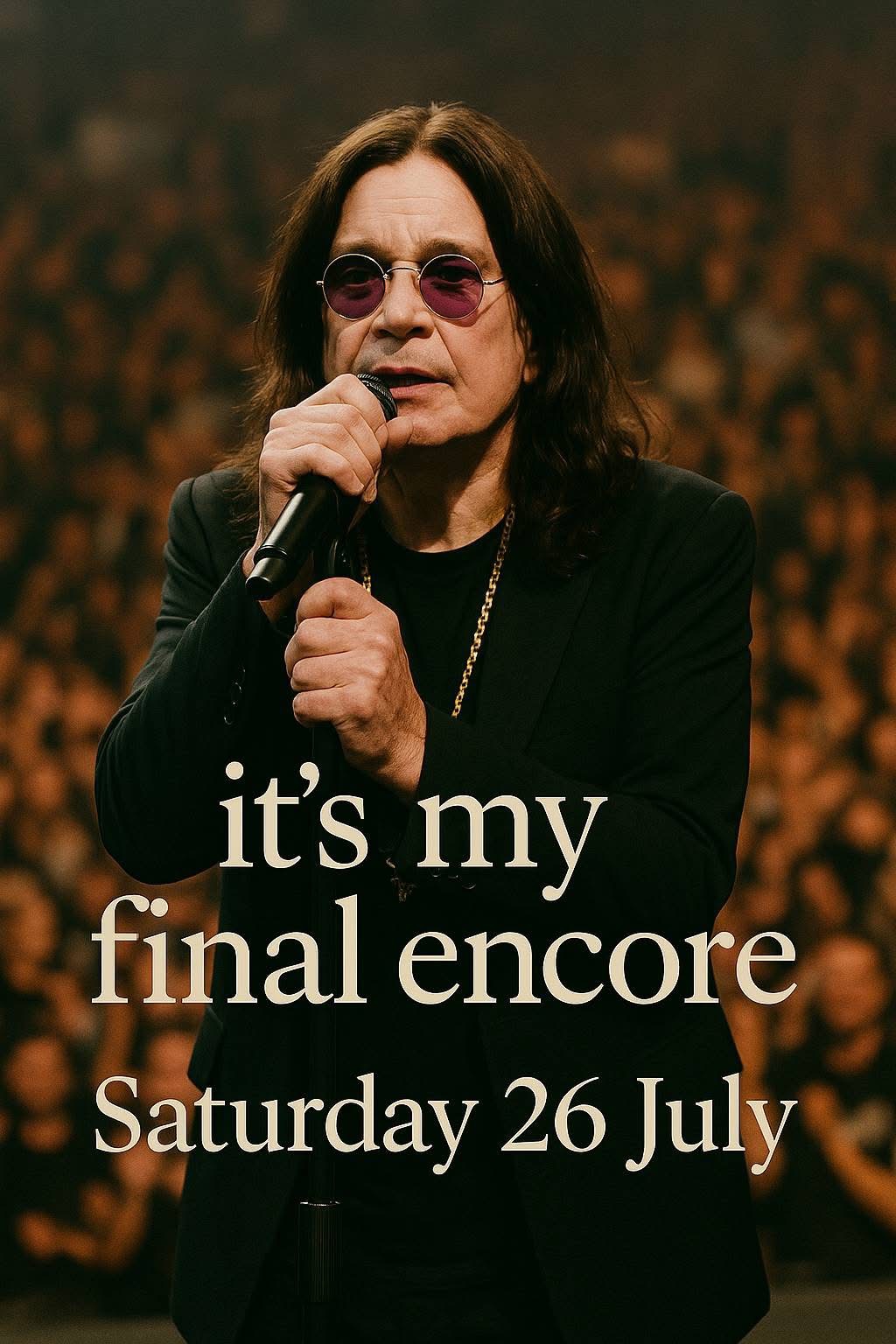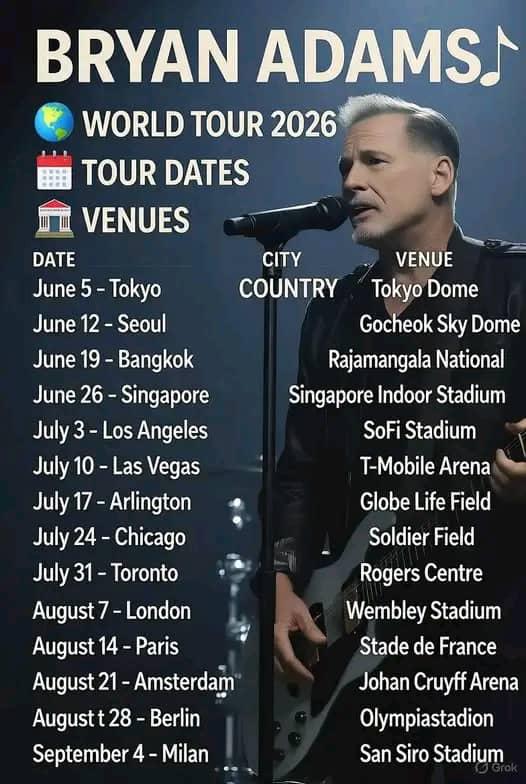Bruce Springsteen’s Heartfelt Protest in San Sebastián: A Musical Reckoning for the American Dream
On June 24, amid the warm glow of a setting sun, the historic Reale Arena in San Sebastián transformed from a mere concert venue into a sanctuary of reflection, resilience, and raw emotion. A crowd of 35,000 gathered outside, not just to hear music but to witness a powerful statement from one of America’s most enduring voices—Bruce Springsteen. As he stepped onto the stage, bathed in the golden light of a Basque summer evening, Springsteen delivered a message that transcended the typical concert experience, turning the event into a poignant act of cultural and political significance.
This wasn’t just another night of song and storytelling. Springsteen chose to pause his open-air performance to introduce a previously unreleased ballad from his 2006 collection, *Tracks II*, a haunting reflection on America’s forgotten streets, silent factories, and the fading hope of its working-class communities. The song, echoing themes of loss, struggle, and resilience, resonated deeply with the audience, many of whom found parallels between the song’s narrative and the global socio-economic upheavals of recent years.
As the notes of the ballad faded into the evening air, Springsteen’s weathered yet resolute voice broke through, delivering a line that would echo in the hearts of those present: “I sing for the American dream—the one we’re still trying to find in the ruins they left us.” The phrase encapsulated the core of his message—an urgent call to remember, to resist, and to rekindle the ideals that once defined the American spirit.
Springsteen’s performance was more than a musical act; it was a reckoning. In a time when national identity and economic stability seem increasingly fragile, his words and music became a rallying cry for resistance and hope. The concert’s setting—an iconic European city far from the American mainland—added layers of symbolism. It underscored the universal relevance of the issues Springsteen has long championed: economic inequality, the decline of industrial communities, and the enduring power of hope amid despair.
Throughout the night, the stage became a space where memory, music, and resistance intertwined. Classics like “Born to Run,” “The River,” and “Thunder Road” took on new significance, reminding the audience of the grit and perseverance that underpin the American Dream. Yet, it was the introduction of the unreleased ballad that truly marked a moment of introspection—a reminder that the dream is not a relic of the past but a fragile, ongoing pursuit.
Springsteen’s choice to perform in San Sebastián was deliberate. Known for his unwavering commitment to social justice and his ability to connect with audiences across borders, he used this international stage to highlight global struggles and shared aspirations. His presence in the Basque city—famous for its history of resistance and resilience—felt like a symbolic gesture, aligning his message with local and global histories of overcoming adversity.
As the evening waned, the crowd’s response was palpable—an amalgamation of cheers, tears, and silent reflection. The concert, in essence, became a communal act of remembrance and resistance, where music served as a vessel for solidarity and hope. Springsteen’s words and melodies underscored that, despite the ruins left by economic upheaval and political neglect, the American Dream remains a vital pursuit—one that requires collective effort to revive and redefine.
In the end, Springsteen’s San Sebastián concert was more than a musical performance; it was a statement—a reminder that music, memory, and resistance are intertwined in the ongoing quest for justice and dignity. As the sun dipped below the horizon, the message lingered: the American Dream is still out there, elusive yet worth fighting for, even in the shadows of the ruins. And with voices like Springsteen’s leading the charge, the hope for renewal remains alive under the open summer sky.



